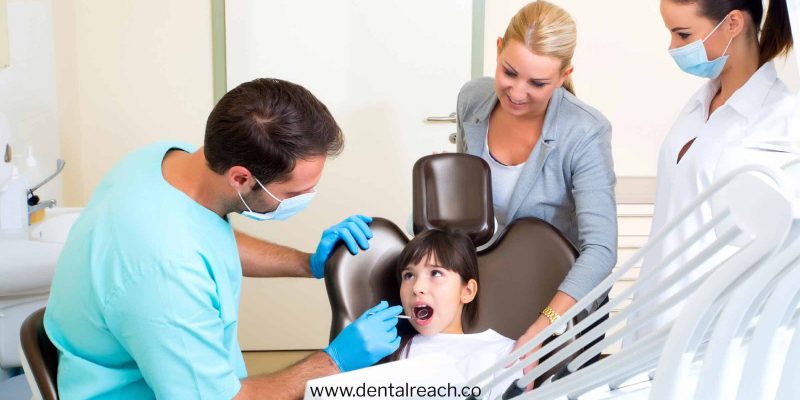Anaesthesia and Sedation for Your Child: Questions to Ask Your Dentist
Children may require treatment due to infection and dental pain. Sometimes the child may need to undergo sedation or anaesthesia. The overall aim is to ensure they receive pain-free and safe treatment. The probability is that there are many aspects to consider. In some dental procedures for children, the child will be required to be in a totally reclined position. There may be some drilling noise which could create anxiety or fear for some children.
There are different types of sedation and anaesthesia used on children in paediatric dentistry:-
Mild sedation is used in adults and older children too. Oral surgeons and dentists can use this type of sedation safely to allow them to perform their work efficiently.
Moderate sedation is used so children experience sleepiness and breathing is normal. Most of the time children do not remember the dental procedures performed by the dentist or oral surgeon.
Deep Sedation includes IV (intravenous medication) which helps the child to sleep properly. The children may find it difficult to breathe, so they make noises sometimes in their semi-conscious state. It is always best to be monitored by an additional qualified professional about the child’s heart rate, blood pressure, oxygen saturation or breathing and rhythm of the heart.
General Anaesthesia is required in both normal and special need children. This anaesthesia is completely pain-free and it allows the child to sleep. The dentists or physicians or professional anaesthetist administer and monitor the child’s condition while the oral surgeon or dentists perform the procedure. Anaesthesia can be given in well-equipped dental clinic or hospital.
Nitrous Oxide is a mild and less invasive. It is well known as laughing gas or a giggle gas. The child feels more relaxed and usually does not sleep because of sedation.
The drugs used for sedation can be administered through various routes including nasal inhalation, oral, intravenous, intramuscular and subcutaneous are some of the popular ways used depending on the condition of the child, the procedure to be undertaken and required level of consciousness. Sedation of paediatric patients may have associated risk factors such as sleep apnea, airway obstruction, cardiopulmonary impairment, laryngospasm. Patients may face adverse effects after getting discharged from the hospital or dental clinic due to dental sedation. Probably, the adverse events are likely to occur within the first 8 hours but may prolong for 24 hours. Due to the anaesthetic effect, the risk of trauma may arise among the children while chewing and/or biting. It particularly occurs in young children due to their development. The toxicity of dose-related to the local anaesthetic agent is reactions of hypersensitivity independently. All the local complications are the fracture of the needle, IV injection, damage to the nerve, block failure, palsy of facial nerve and infection. Respiratory arrest, seizures, unconsciousness are the effects of the central nervous system.
Question you may ask your dentist.
- Who will provide the preoperative evaluation of the child including their past dental and medical history?
- What experience does the anaesthetist require to give anaesthesia or sedation which is planned before the procedure?
- Does the experience and training of dentists meet all the standards of the authority guidelines while using anaesthesia and sedation?
- Do the staff have the training and experience in assisting with sedation for the emergency resuscitation procedures such as health care providers and basic life support for providers?
During and after the procedure.
- What is the level of general anaesthesia or sedation as compared to the local anaesthesia used for children in dental procedure?
- Are general anaesthesia, or minimal sedation or, deep sedation or moderate sedation used in order to sedate the child?
- How will the child be monitored after and during the procedure in the hospital or dental clinic?
- What are the appropriate equipment and medications available immediately in case of emergency?
- Whether or written emergency plan of response for medical emergencies management is held by the hospital authority?
- Will the provider give us the instruction note and the contact information for the emergency in case of complications or concerns by the sedation/anaesthesia after returning back home?
In consideration of the cognitive development of child’s proposed procedure of dental work manages the important aspect of pediatric dentistry and adequate assessment of preoperative procedures are required for the appropriate desired result. It must be advised to parents to keep the child’s mouth clean. There will be fewer chances of failure or option of repeated treatment procedure.
The number of child patients is increasing. They need rehabilitation of dental procedure under general anaesthesia. The dentists will select the appropriate technique based on the child’s characteristics. The knowledge of the paediatric dentist helps to serve quality dental care with safety and comfort for the patient.
References:
Joginder Pal Attri, Radhe Sharan, Vega Makkar, Kewal Krishan Gupta,1 RanjanaKhetarpal, and Amar ParkashKataria Conscious Sedation: Emerging Trends in Pediatric Dentistry, Anesth Essays Res. 2017 Apr-Jun; 11(2): 277–281.
Charles J. Coté, Stephen Wilson the Work Group on Sedation, Guidelines for Monitoring and Management of Pediatric Patients During and After Sedation for Diagnostic and Therapeutic Procedures: An Update, American Academy of Pediatrics, American Academy of Pediatric Dentistry, Revised 110(4):836 , 89(6):1110
PriyanshiRitwik, BDS, MS,* Linda T. Cao, DDS,† Ronald Curran, DDS,‡ and Robert J. Musselman Post-sedation Events in Children Sedated for Dental Care AnesthProg. 2013 Summer; 60(2): 54–59.
Bonus: Download our monthly e-bulletin!Click here to get it
DISCLAIMER : “Views expressed above are the author’s own.”




















Comments